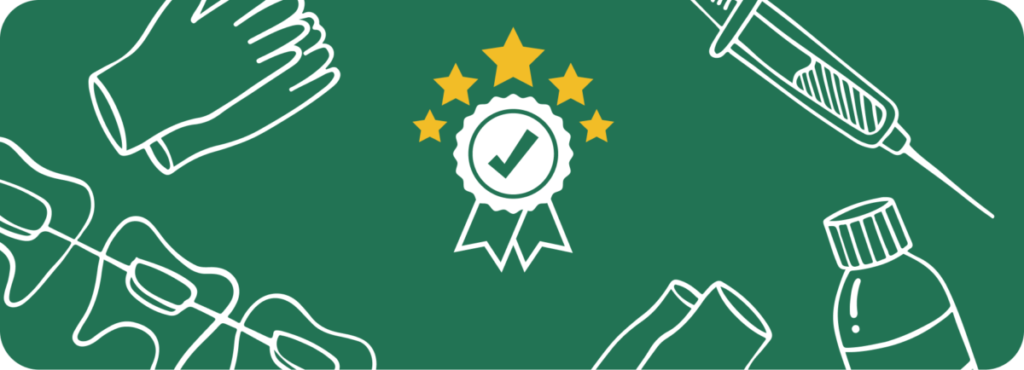Exploring the Essential Types of Medical Gloves: A Comprehensive Guide
Gloves are an essential tool for healthcare workers in the fast-paced, high-stakes world of the medical field. The correct choice of gloves can significantly improve patient care and safety, from preventing infectious diseases to maintaining sterile conditions during surgical procedures. We’ll discuss the many kinds of gloves used in the medical industry, their unique applications, and how important it is to maintain hygiene and avoid cross-contamination in this blog.
1. Latex Gloves:
Since latex gloves are comfortable, flexible, and sensitive to touch, they have long been used in medical settings. Excellent protection against bodily fluids and infections renders them appropriate for a variety of medical operations, such as wound care, general patient care, and patient examinations. It’s important to remember that latex allergies are somewhat frequent, therefore medical professionals must take further precautions when treating individuals who have a history of sensitivities.
2. Nitrile Gloves:
As an alternative to latex gloves, nitrile gloves are becoming more and more well-liked, especially among those who are allergic to latex. Compared to latex gloves, they provide better durability, chemical resistance, and puncture resistance. Because of their versatility, nitrile gloves can be used for a wide range of medical tasks, such as handling hazardous items, performing laboratory work, and performing surgery. They are the best option for tasks requiring increased protection against pollutants because of their superior barrier qualities.
3. Vinyl Gloves:
Another choice that’s frequently utilized in medical settings is vinyl gloves, which are reasonably priced and multipurpose. Vinyl gloves provide enough protection for low-risk tasks including patient examinations, handling non-hazardous items, and basic wound care, but they are not as strong or puncture-resistant as latex or nitrile gloves. Although they don’t contain latex, which makes them safe for people who have latex allergies, they might not have as much tactile sensitivity as other kinds of gloves.
4. Polyethylene Gloves:
In medical contexts, polyethylene gloves are affordable, lightweight, and appropriate for low-risk, brief jobs. They are frequently employed for tasks like cleaning, basic hospital care, and food preparation because they offer a rudimentary barrier against pollutants. Polyethylene gloves, on the other hand, provide very little defense against chemicals and punctures, making them inappropriate for high-risk operations or settings where stringent infection control protocols are necessary.
5. Sterile Surgical Gloves:
To reduce the danger of surgical site infections, sterile surgical gloves are made expressly to maintain a sterile environment during surgical procedures. They are constructed of materials like latex, nitrile, or neoprene and go through a thorough sterilizing process to get rid of bacteria. Excellent tactile sensitivity and dexterity provided by sterile surgical gloves enable doctors and operating room personnel to carry out complex procedures with confidence and accuracy.
Purpose and Importance:
The purpose of medical gloves is twofold: to protect healthcare providers from exposure to infectious agents and bodily fluids, and to prevent cross-contamination between patients and healthcare workers. Proper glove usage is essential for maintaining hygiene, preventing the spread of infections, and ensuring patient safety.
In medical settings, gloves serve as a critical barrier against pathogens, chemicals, and other hazards, reducing the risk of transmission of infectious diseases and protecting both healthcare providers and patients. By wearing gloves, healthcare professionals can perform procedures safely and confidently, minimizing the risk of contamination and maintaining sterile environments when necessary.
When to Use Each Type of Glove?
Latex Gloves: Suitable for a wide range of medical procedures, including patient examinations, wound care, and general patient care.
Nitrile Gloves: Ideal for tasks requiring enhanced protection against punctures, chemicals, and infectious agents, such as surgical procedures, laboratory work, and handling hazardous materials.
Vinyl Gloves: Used for low-risk tasks such as patient examinations, handling non-hazardous materials, and basic wound care.
Polyethylene Gloves: Suitable for short-term, low-risk tasks such as food preparation, cleaning, and basic patient care.
Sterile Surgical Gloves: Essential for maintaining a sterile environment during surgical procedures, minimizing the risk of surgical site infections, and ensuring patient safety.
Overall, choosing the appropriate gloves is essential for maintaining safety, hygienic practices, and infection control in the medical field. Healthcare personnel can effectively safeguard themselves and their patients by making informed judgments based on their awareness of the features, applications, and constraints of each type of glove. The wide variety of medical gloves on the market, which range from vinyl to polyethylene, latex to nitrile, provide solutions suited to the unique requirements of various medical tasks and settings, eventually improving patient care and results.


